Fixing a pocket door that rubs can be a frustrating task, but it doesn’t have to be. Pocket doors are a great space-saving solution, but they can be prone to rubbing and sticking over time. In this article, I will share my knowledge on how to fix a pocket door that rubs, so you can enjoy the convenience of a fully functioning pocket door once again.
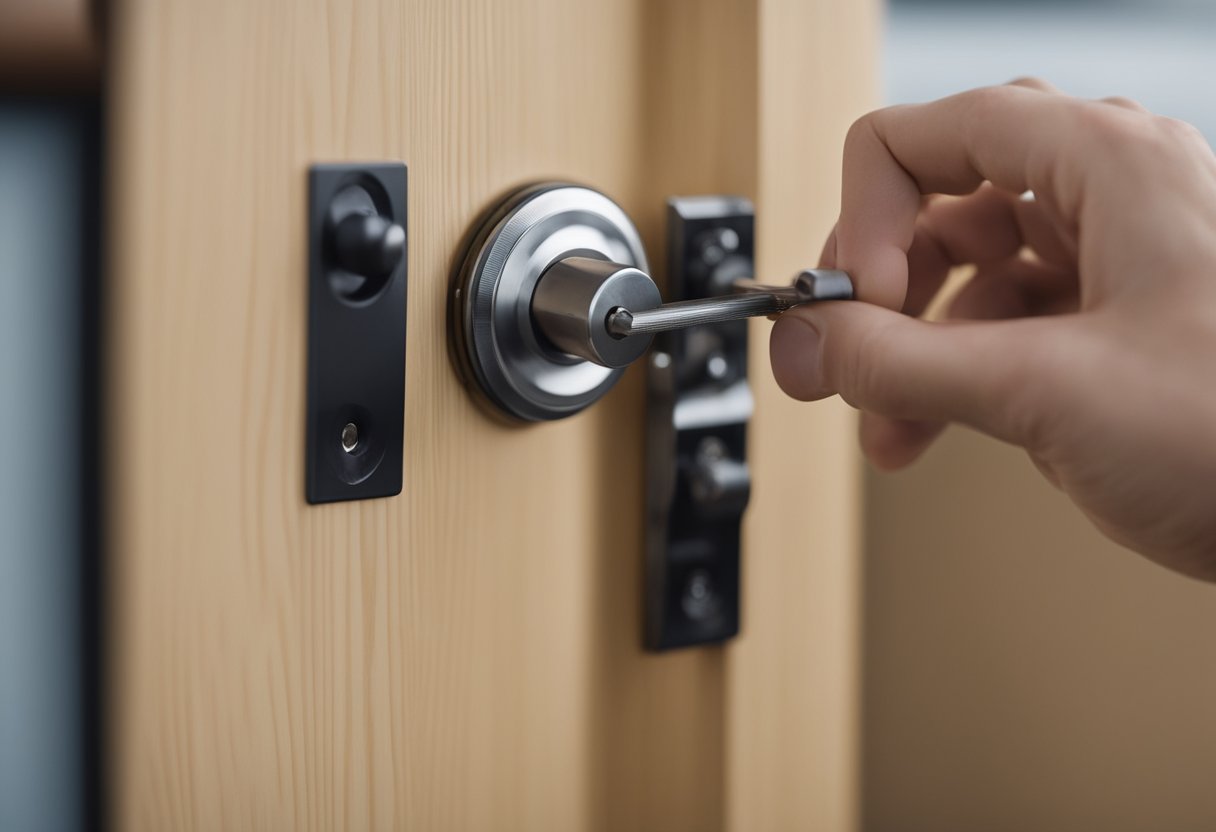
Before we dive into the steps on how to fix a pocket door that rubs, let’s first understand what a pocket door is. A pocket door is a sliding door that disappears into a compartment in the adjacent wall when opened. Pocket doors are commonly used in small spaces or where a traditional hinged door would take up too much room. Understanding how a pocket door works is crucial in identifying and fixing any issues that may arise. Now, let’s get started on fixing that pesky rubbing pocket door.
Key Takeaways
- Identify the problem and gather the necessary materials and tools.
- Adjust the rollers and address any track issues.
- Consider replacing the door or hardware if necessary and maintain your pocket door for long-lasting use.
Understanding Pocket Doors
As a homeowner, you may have come across pocket doors as a space-saving solution for your home. Pocket doors are a type of sliding door that slides into a pocket or cavity in the adjacent wall, which allows them to save space compared to traditional hinged doors.
Pocket doors are commonly used in areas where space is limited, such as small bathrooms, closets, and laundry rooms. They are also popular in open-concept homes, where they can be used to create separate spaces without taking up valuable floor space.
One of the main components of a pocket door is the door frame. The door frame is typically made of wood or metal and is installed directly into the wall. The door slides along a track that is mounted to the top of the door frame.
While pocket doors are a great space-saving solution, they can also be prone to rubbing and sticking. This can be caused by a variety of factors, including misaligned tracks, loose screws, or warped doors.
In the next section, I will provide some tips on how to fix a pocket door that rubs and ensure that it is functioning properly.
Identifying the Problem
When it comes to fixing a pocket door that rubs, the first step is to identify the problem. There are several reasons why a pocket door may rub or scrape against the frame, including misalignment, warping, or damage to the rollers.
One common issue is misalignment, which can occur if the door has been installed incorrectly or if the track has shifted over time. To check for misalignment, I recommend opening and closing the door a few times while observing the gap between the door and the frame. If the gap is uneven or the door seems to be rubbing against one side of the frame, it is likely misaligned.
Another possible cause of rubbing is warping, which can occur if the door or frame has been exposed to moisture or changes in temperature. To check for warping, I recommend inspecting the door and frame for any visible signs of damage or distortion. If the door appears to be bowed or the frame is warped, this may be the cause of the rubbing.
In some cases, the rollers on the door may be damaged or worn, causing the door to rub or scrape against the frame. To check for roller damage, I recommend removing the door from the track and inspecting the rollers for any signs of wear or damage. If the rollers appear to be damaged, they may need to be replaced.
Overall, identifying the problem is the first step in fixing a pocket door that rubs. By observing the door and frame and checking for misalignment, warping, or roller damage, I can determine the best course of action to fix the problem and ensure that the door operates smoothly and efficiently.
Materials and Tools Required
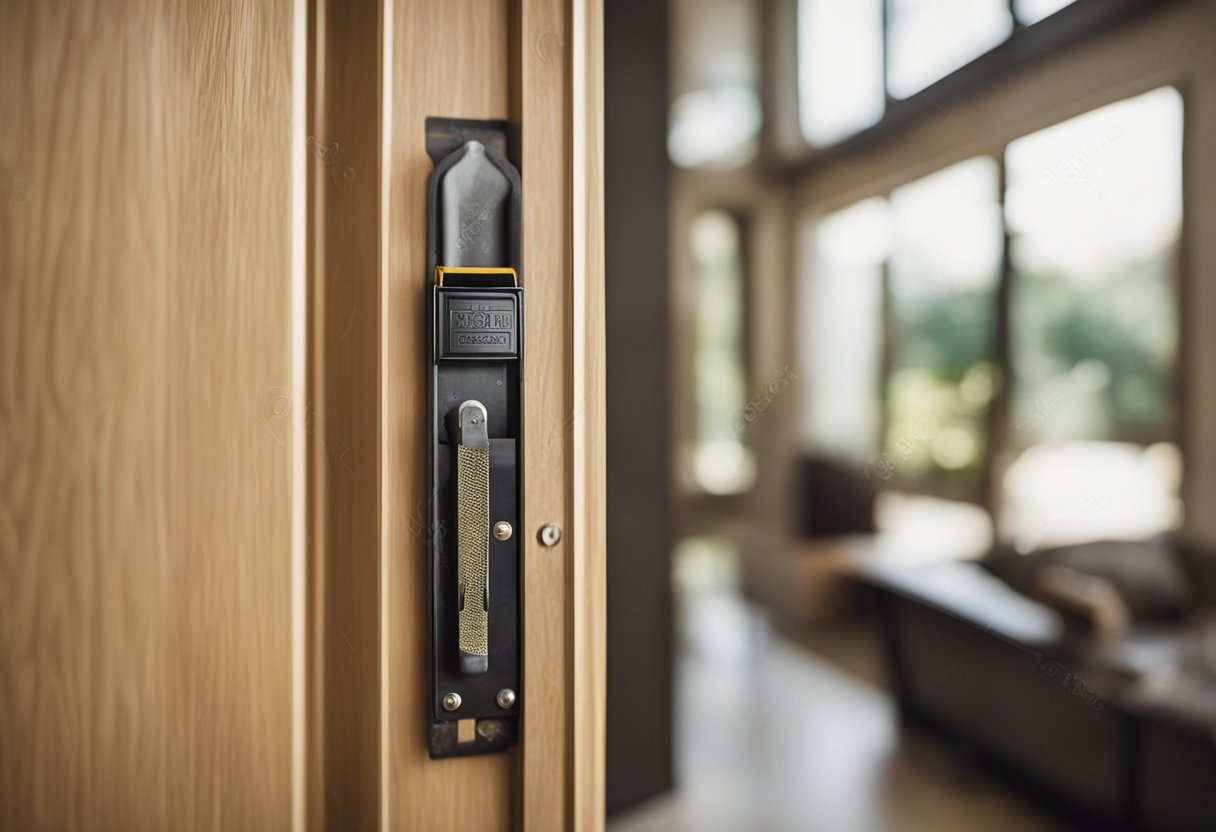
Before starting the process of fixing a pocket door that rubs, it is important to have all the necessary tools and materials. Here are the materials and tools required:
Materials
-
Shims: Shims are small pieces of wood or plastic used to level and support the door. They come in various sizes and shapes and are essential for ensuring that the door is level and secure.
-
High-quality lubricant: A high-quality lubricant is necessary to ensure that the door glides smoothly along the track. It is important to choose a lubricant that is specifically designed for use on pocket doors.
-
Plastic shims: Plastic shims are an alternative to wood shims and are useful when working with moisture-prone areas.
-
Quality hardware: Quality hardware is essential for ensuring that the door operates smoothly. It is important to choose hardware that is specifically designed for use on pocket doors.
Tools
-
Screwdriver: A screwdriver is essential for removing and adjusting screws.
-
Hammer: A hammer is useful for tapping shims into place.
-
Level: A level is necessary for ensuring that the door is level and plumb.
-
Chisel: A chisel is useful for trimming shims to size.
-
Drill: A drill is necessary for making new holes or enlarging existing holes in the door frame.
-
Sandpaper: Sandpaper is useful for smoothing rough spots and edges.
In summary, having the right tools and materials is crucial for fixing a pocket door that rubs. With the above materials and tools, you can confidently fix your pocket door and have it operating smoothly in no time.
Adjusting the Rollers
When a pocket door rubs against the frame, it is often due to the rollers being out of alignment. To fix this issue, you will need to adjust the rollers. Here is how I do it:
-
Locate the rollers and adjustment screws: The rollers are usually located at the top of the door and ride along the track. The adjustment screws are typically located on the face of the door near the rollers.
-
Remove the door from the track: Before adjusting the rollers, you will need to remove the door from the track. This can be done by lifting the door up and off the track. Be sure to have someone help you as pocket doors can be heavy.
-
Make small adjustments: Once the door is off the track, you can begin to adjust the rollers. Make small adjustments to the screws by turning them clockwise or counterclockwise with a screwdriver. Test the door after each adjustment to see if the rubbing has stopped.
-
Reinstall the door: Once you have made the necessary adjustments, reinstall the door onto the track. Test the door again to ensure that it is no longer rubbing against the frame.
Remember to make small adjustments to the rollers as even a slight change can make a big difference. If you are having trouble making the necessary adjustments, it may be best to seek the help of a professional.
Adjusting the rollers is just one of the many ways to fix a pocket door that rubs. By following these simple steps, you can have your pocket door gliding smoothly in no time.
Addressing Track Issues
If your pocket door rubs against the frame, the first thing to check is the condition of the track. A damaged or misaligned track can cause the door to rub and make it difficult to slide open and closed. Here are some steps to take to address track issues:
Inspect the Track
The first thing to do is to inspect the track for any visible damage or misalignment. Check for any dents, scratches, or bends in the metal track. If there is any visible damage, you may need to replace the track entirely. If the track is in good shape, move on to the next step.
Check for Level
The track must be level for the pocket door to slide smoothly. Use a carpenter’s level to check if the track is level. If it is not level, adjust it by tightening or loosening the screws that hold it in place. Be sure to check the level again after making any adjustments.
Adjust the Alignment
If the track is level but the door still rubs against the frame, the alignment may be off. Adjust the alignment by loosening the screws that hold the track in place and moving it slightly in the direction needed. Tighten the screws again once you have adjusted the alignment.
Replace the Track
If the track is damaged beyond repair, you may need to replace it entirely. Installing a new track is a relatively simple process that involves removing the old track and installing the new one. Be sure to choose a track that is the correct size and material for your door.
By following these steps, you can address track issues that cause your pocket door to rub against the frame.
Dealing with Obstructions and Gaps
When it comes to fixing a pocket door that rubs, obstructions and gaps can be a common issue. These problems can cause the door to stick or rub against the frame, making it difficult to open and close. However, with the right tools and techniques, you can easily fix these issues and get your pocket door working smoothly again.
First, let’s talk about obstructions. If you notice that your pocket door is rubbing against something inside the wall, it’s likely that there is an obstruction in the track. This could be anything from a loose screw to a piece of debris that has fallen into the track. To fix this issue, you will need to remove the door from the track and inspect it for any obstructions. Once you have located the obstruction, you can remove it using a pair of pliers or a screwdriver.
Next, let’s talk about gaps. If your pocket door is rubbing against the frame or the wall, it’s likely that there is a gap between the door and the frame. This could be caused by uneven floors or walls, or by a door that is not properly aligned. To fix this issue, you will need to adjust the clearance between the door and the frame. You can do this by using shims to fill any gaps or by adjusting the rollers on the door.
It’s important to note that when dealing with gaps, you should always check the clearance at the top and bottom of the door. If the clearance is uneven, you may need to adjust the rollers to ensure that the door is properly aligned. You can do this by adjusting the screws on the rollers or by using shims to level the door.
In summary, obstructions and gaps can be a common issue when it comes to fixing a pocket door that rubs. By using the right tools and techniques, you can easily fix these issues and get your pocket door working smoothly again. Remember to always check for obstructions and gaps, and to adjust the clearance between the door and the frame as needed. With a little bit of effort, you can have your pocket door working like new in no time.
Replacing the Door or Hardware
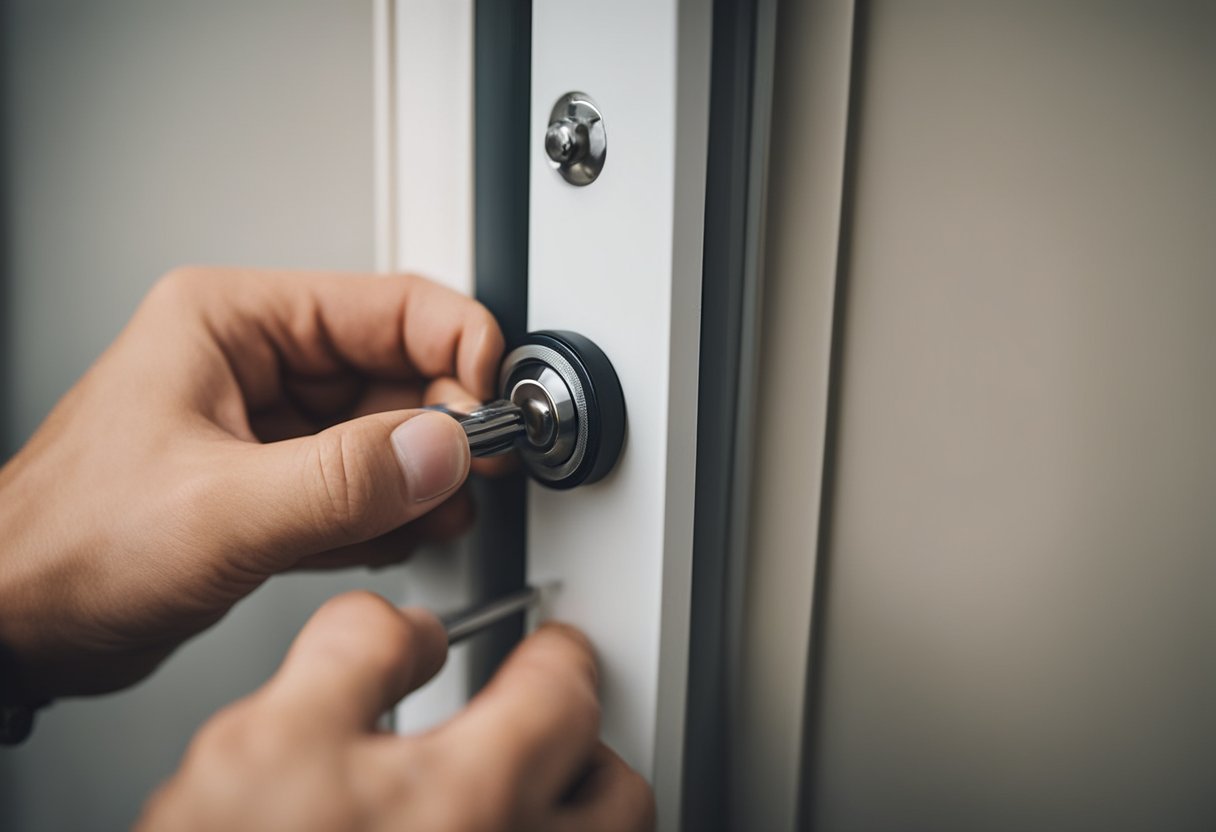
If adjusting the rollers and track did not solve the issue, it may be time to consider replacing the pocket door or its hardware. Here are some steps to follow:
-
Assess the door and hardware: First, examine the door and hardware to determine what needs to be replaced. If the door is damaged or warped, it may need to be replaced entirely. If the rollers are worn out or damaged, they can be replaced separately.
-
Remove the old door and hardware: To remove the old door, start by removing the trim around the door frame. Then, remove the screws from the top track and lift the door out of the track. If you are replacing the rollers, remove them from the bottom of the door.
-
Install the new door or hardware: If you are replacing the entire door, install the new door into the pocket door frame. If you are replacing the rollers, install the new rollers onto the bottom of the door. Then, place the door back into the track and secure it with screws.
-
Replace the trim: Once the new door or hardware is installed, replace the trim around the door frame.
It’s important to note that replacing the pocket door or hardware requires some DIY skills and tools. If you are not comfortable with this type of work, it may be best to hire a professional.
When replacing the door or hardware, it’s also important to ensure that the pocket door frame and studs are in good condition. If the frame or studs are damaged, they may need to be replaced as well.
Maintaining Your Pocket Door
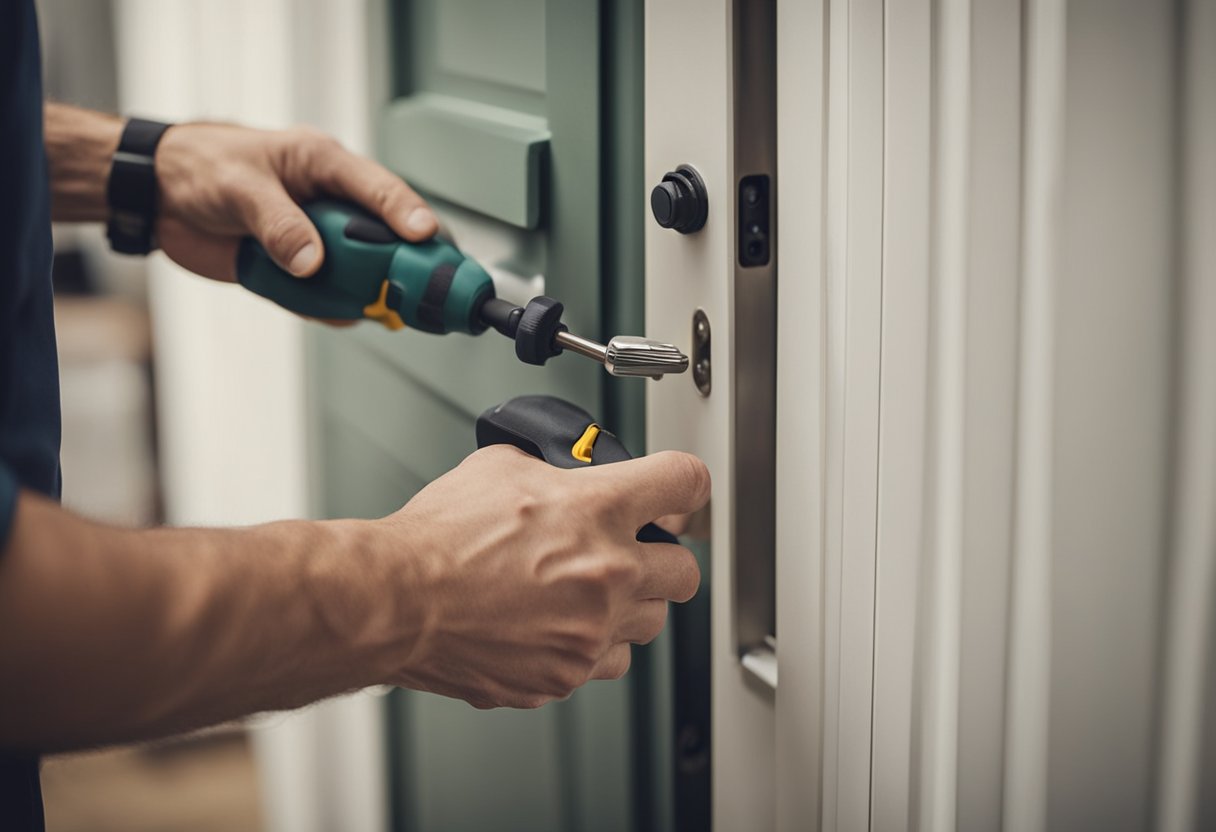
As a homeowner, it is important to maintain your pocket door to ensure that it functions properly. Regular maintenance of your pocket door can prevent it from rubbing and causing damage to the floor or the door itself.
One of the most important components of a pocket door is the bottom guide. The bottom guide keeps the door in place and prevents it from swinging or rubbing against the frame. Check the bottom guide regularly to ensure that it is properly aligned and securely attached to the door.
Safety is also an important consideration when maintaining your pocket door. Always make sure that the door is securely in place before opening or closing it. If the door is not properly aligned, it can become a safety hazard.
If your pocket door is rubbing, it may be necessary to restore it to its original condition. This may involve adjusting the rollers, replacing the track, or repairing any damage to the door itself. Always consult a professional if you are unsure how to proceed with restoring your pocket door.
In conclusion, regular maintenance of your pocket door is essential to ensure that it functions properly and does not cause damage to your home. By checking the bottom guide, ensuring safety, and restoring the door when necessary, you can keep your pocket door in excellent condition for years to come.
Additional Resources
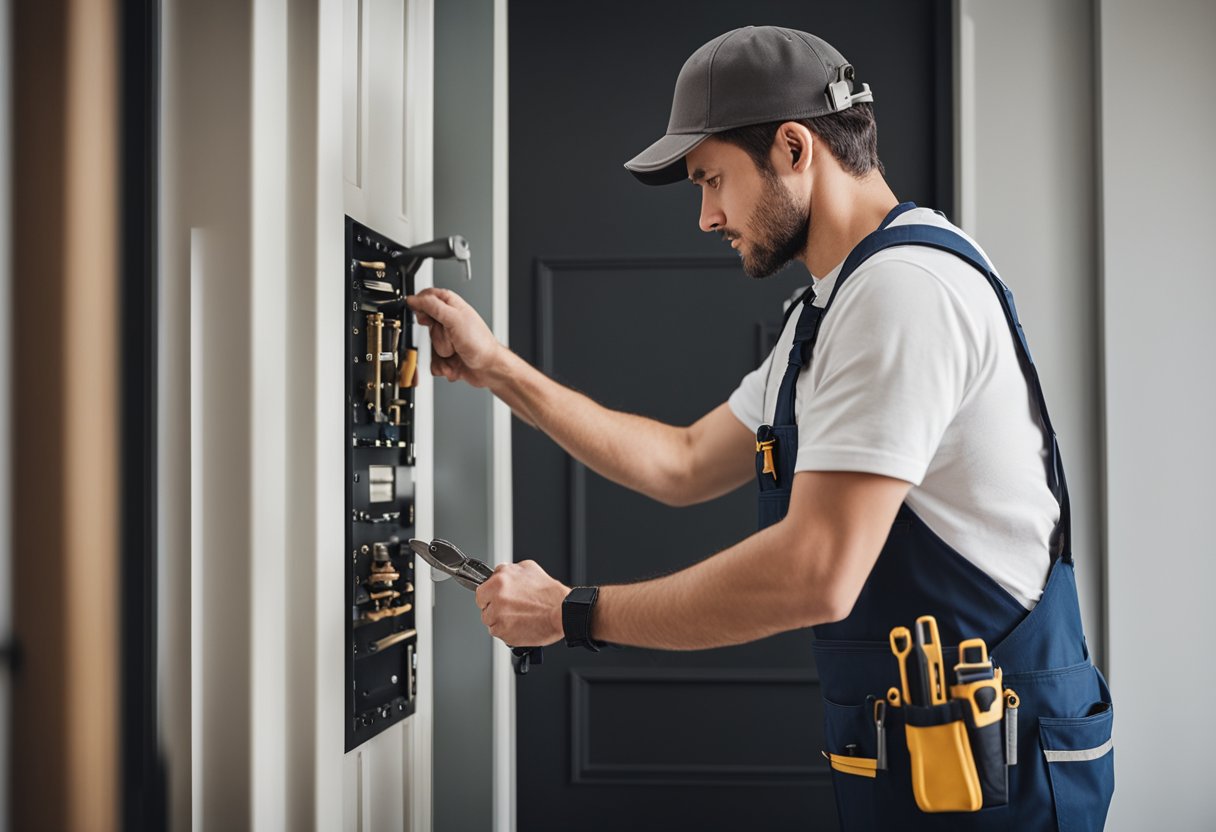
If you’re having trouble fixing your pocket door that rubs, don’t worry! There are plenty of additional resources available to help you out. Here are some tips and tricks to help you get your pocket door back on track.
Videos
If you’re a visual learner, there are plenty of videos available online that can help you fix your pocket door. Check out YouTube for tutorials on how to fix your pocket door that rubs. These videos can be helpful because they show you exactly what to do and how to do it.
Alterations
If adjusting the rollers and track doesn’t work, you may need to make some alterations to your pocket door. This could include sanding down the door or adjusting the frame. If you’re not comfortable making these alterations yourself, consider hiring a professional to do it for you.
Roller Mechanism
Your pocket door’s roller mechanism is responsible for keeping the door on track. If the rollers are worn out or damaged, they can cause the door to rub. Make sure to check the rollers and replace them if necessary.
Drywall and Plaster
If your pocket door is rubbing against the drywall or plaster, you may need to make some repairs to the wall. This could include patching up any holes or cracks, or even replacing the drywall or plaster altogether.
Humidity
Humidity can cause your pocket door to swell, which can cause it to rub against the frame. If you live in a humid climate, consider installing a dehumidifier to help reduce the humidity levels in your home.
By following these tips and utilizing the additional resources available, you should be able to fix your pocket door that rubs in no time. Don’t hesitate to reach out to a professional if you’re not comfortable making the repairs yourself.
Frequently Asked Questions

What are common causes of pocket doors rubbing?
Pocket doors can rub against the frame for a variety of reasons. The most common cause is misalignment of the rollers or track. This can be due to wear and tear, shifting of the house foundation, or improper installation. Another common cause is the door being too big for the frame, which can cause it to scrape against the frame.
How can I diagnose the issue with my pocket door?
The first step in diagnosing a rubbing pocket door is to inspect the rollers and track. Look for any signs of wear or damage, such as dents or cracks. Check to see if the rollers are properly aligned and if the track is level. If the rollers or track are damaged, they will need to be replaced. If they are simply misaligned, they can usually be adjusted.
What tools do I need to fix a rubbing pocket door?
To fix a rubbing pocket door, you will need a few basic tools, including a level, tape measure, pliers, and sandpaper or a wood planer (if needed). You may also need a screwdriver or drill to remove and adjust the door’s rollers.
What are some DIY solutions to fix a rubbing pocket door?
One DIY solution to fix a rubbing pocket door is to adjust the rollers. This involves loosening the adjustment screws and moving the rollers up or down until they are properly aligned with the track. Another solution is to sand down the edge of the door that is rubbing against the frame. This can be done with sandpaper or a wood planer.
When should I call a professional to fix my pocket door?
If you are not comfortable working with tools or do not have experience with pocket doors, it may be best to call a professional to fix your rubbing pocket door. Additionally, if the issue is caused by damage to the rollers or track, it is best to have a professional assess the damage and make any necessary repairs.
Can I prevent my pocket door from rubbing in the future?
To prevent your pocket door from rubbing in the future, it is important to maintain the rollers and track. This includes keeping them clean and free of debris, and lubricating them regularly. Additionally, make sure the door is properly installed and that it fits the frame correctly.

Hi, I’m Sal Muller of Tooltrip.com. My DIY experience led me to understand essential power tools for home projects. Tooltrip.com guides enthusiasts and professionals in choosing right tools for any job. I provide concise top tool reviews for easier, efficient DIY.

